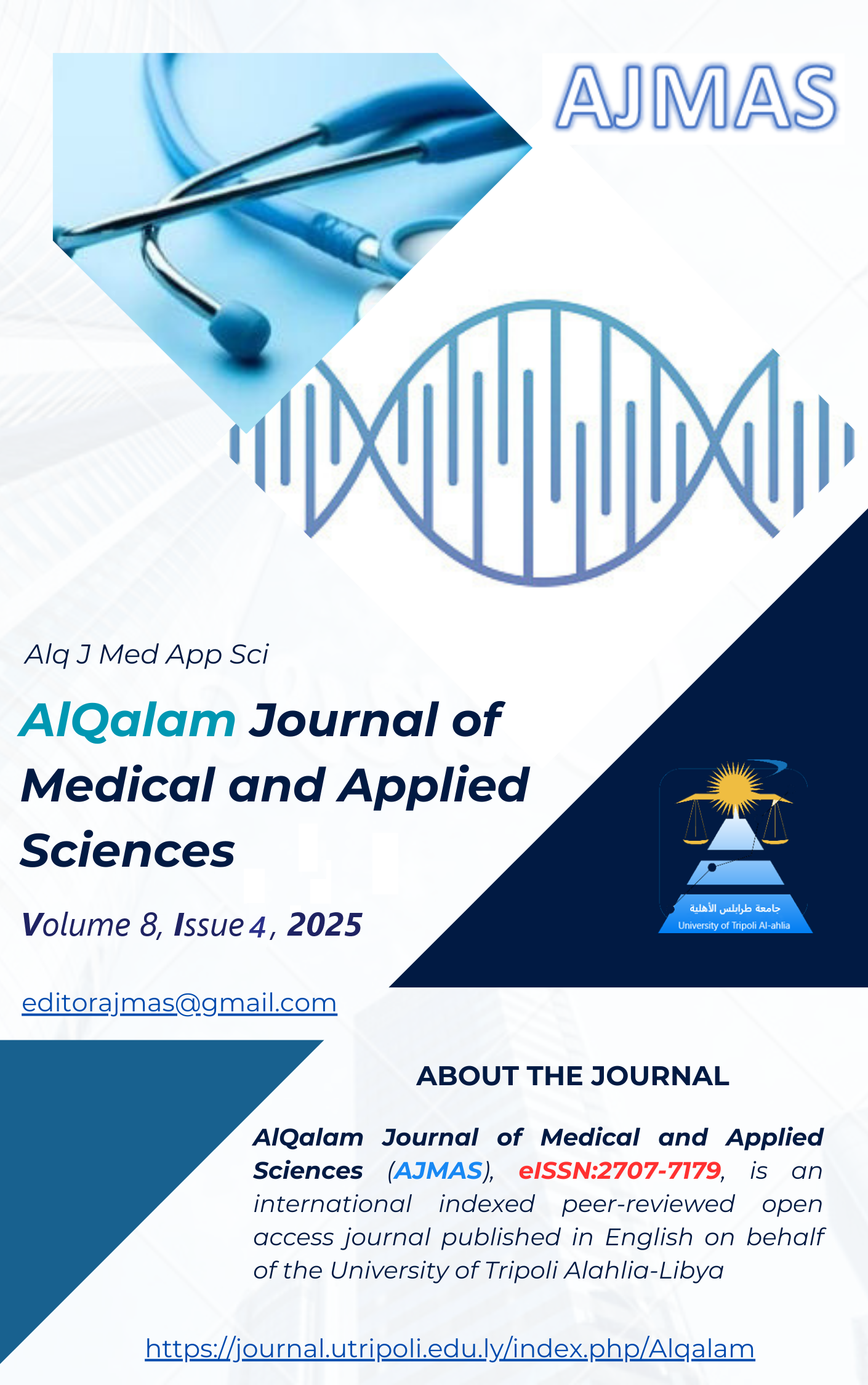Identification and Antibiotic Susceptibility Testing of Bacterial Profiles in Libyan Diabetic Patients with Urinary Tract Infections
DOI:
https://doi.org/10.54361/ajmas.258460Keywords:
Urinary Tract Infection, Diabetes Mellitus, Bacterial Profile, Antimicrobial Susceptibility Pattern.Abstract
Diabetes mellitus is becoming remarkably more prevalent worldwide, and over time, it has a substantial effect on the genitourinary system, increasing the risk of urinary tract infections in diabetic patients. The purpose of this study is to reveal the distribution of uropathogens in diabetic patients according to age and sex, as well as their corresponding resistance patterns. Finding an efficient antibiotic treatment that reduces the risk of UTIs in individuals with diabetes is another goal. A cross-sectional study was conducted from September to December 2024 concurrently at the diabetes and endocrinology departments in Diabetes and Endocrinology Hospital, Al Khalil Hospital, and Libyan Swiss Hospital in Tripoli, Libya, among individuals aged 15 and older. This study included a total of 70 diabetic patients, consisting of 25 males and 45 females. To gather data on the study participants' demographics, clinical features, and risk factors, a standardized questionnaire was employed. A 10-mL midstream urine specimen was collected and transported as soon as possible to the microbiology lab for culture and antimicrobial susceptibility testing to detect a resistant bacterial pattern. Data were analyzed using SPSS and Microsoft Excel. Among 70 diabetic patients, the overall prevalence of UTI was 69%, with most of them being females. The predominant bacterial isolate was Escherichia coli 20/48 (42%), followed by Klebsiella pneumonia 11/48 (23%) and Staphylococcus aureus 9/48 (19%). Gram-negative isolates exhibited moderate resistance to nitrofurantoin F and ciprofloxacin, whereas Gram-positive isolates showed a moderate level of resistance to nitrofurantoin and ciprofloxacin. This study's findings showed that E. coli isolates were the predominant pathogens, along with the presence of bacterial isolates exhibiting moderate and low resistance to commonly prescribed drugs, which in turn leaves clinicians with very few alternative drug options for the treatment of UTIs. As drug resistance among bacterial pathogens is an evolving process, routine surveillance and monitoring studies should be conducted to provide physicians with knowledge of updated and most effective empirical treatments for UTIs.
Downloads
Published
How to Cite
Issue
Section
License
Copyright (c) 2025 Fatma Alazabi, Najla Elyounsi, Mariam Elahjal, Ayad Abud, Salem Ali

This work is licensed under a Creative Commons Attribution 4.0 International License.














